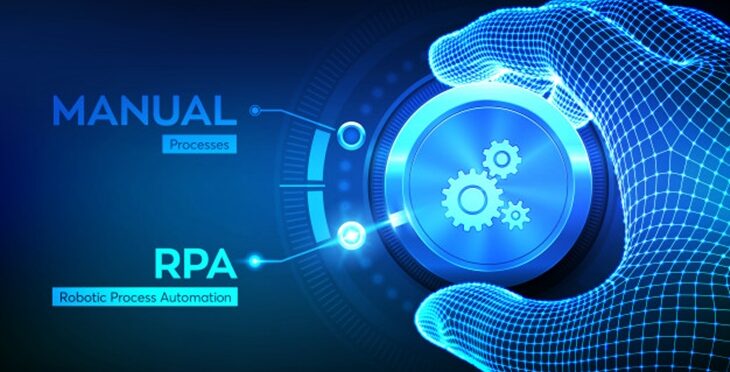Engaging your human workforce in repetitive tedious tasks seems to be a waste of valuable resources. These employees could be better off working on more productive tasks. The solution to this problem is Robotic Process Automation (RPA) Tools.
What is Robotic Process Automation?
Robotic Process Automation or RPA solutions help automate repetitive manual tasks. Tasks such as data entry, report creation, and other tasks which do not require critical thinking can be automated. Main functions of RPA tools involve configuring tasks to get automated.
RPA tools help free up the employees that would otherwise be caught up in tedious, repetitive work and eliminate the possibility of human error. A human error such as one mistyped number could change the entire outcome of a financial report.
RPA tools help free up the employees’ time and let them concentrate on the more critical parts of businesses. It also reduces the time needed to get the tasks done.
Some of the benefits enterprises derive from RPA tools are: reduced operating cost, quicker resolution times, resilient support for the enterprise and their customers, and improved business agility.
List of Eight Best RPA tools
There are ample players in the market for you to select from. The main criteria that enterprises look for RPA tools include easy to set up and use, flexible, scalable, and budget-friendly. It could be intimidating considering the number of available options. There are a few RPA tools for small businesses that can be scaled for medium to large businesses as well.
Here are the top 8 RPA tools for you to consider before making your decision:
One of the top ranking solutions in the market, Automation Anywhere, enables their clients to automate end-to-end business processes. The software bots help automate the repetitive tasks that would’ve otherwise taken many human hours to complete.
Automation Anywhere provides on-premise as well as cloud services. It provides all the core features required in an RPA tool. Automation Anywhere is a platform-independent solution. It offers real-time reports and analytics.
Automation Anywhere provides security to the systems through authentication and encryption. Their enterprise solution provides intelligent automation tasks for IT and business operations.
Users do not need any prior programming knowledge for using Automation Anywhere.
It has three basic bots – IQ bot, Meta bot, and Task bot.
Automation Anywhere provides a 30-day free trial period. Post the trial period, users can opt for their subscriptions which are divided into two categories:
- Cloud Starter Pack: For Small businesses
- Advanced Pack: For Medium to large businesses
Users can either opt for monthly or annually billing for their subscription.
A leading solution in the open-source RPA tools market, UiPath can be used to automate any desktop or web application. It allows enterprises to design and automate their processes for their organization.
UiPath provides support to four major languages – English, French, Japanese, and Russian.
Just like Automation Anywhere, Users do not require any coding knowledge for designing automation using UiPath.
UiPath is available on Cloud, on-premises, and in hybrid modes of operations for your systems.
The tool’s UiPath Automation Hub allows users to control all their automation from one central place.
UiPath provides attended as well as unattended robots to work with. The attended robots are triggered when users perform certain tasks. The unattended robots, as the name suggests, run in the background without any supervision.
UiPath offers a 60-day trial period for enterprise and on-premise plans. Post which users will have to reach out to their sales executives for a quotation.
Blue Prism helps automate repetitive office tasks, thus freeing up employee’s time up. This allows employees to concentrate on more productive tasks.
Blue Prism comes with an easy-to-use drag-and-drop feature. This allows developers to design automation with ease.
Blue Prism is platform-agnostic, meaning it can work on any platform with any applications.
Blue Prism also provides a trial period of 30 days. It also offers a 180 day trial period for their Learning edition wherein users can improve their development and automation skills.
Users need to contact their sales teams for information regarding their plans and pricing.
AutomationEdge RPA tool offers features to automate front-office, back-office, and IT operations tasks. It helps streamline repetitive tasks such as Excel spreadsheet procedures and activities.
Their chatbot is powered by AI and is capable of interacting with customers and fulfilling their requests.
AutomationEdge is capable of automating rule-based, repetitive tasks. The tool is capable of optimizing the automated tasks to improve their efficiency. The elimination of human intervention in the process allows the tool to work with utmost efficiency. This results in reduced time and efforts required to complete the task.
AutomationEdge uses UI automation and is thus able to integrate compatible and non-compatible applications.
AutomationEdge also provides a 30-day free trial. However, users have to get in touch with their sales team to get a quotation.
Also Read: RPA vs. Cognitive Automation: What’s the Difference?
Pega RPA offers its users the options to automate some of the most tedious tasks, such as onboarding customers and employees, reconciling finances, updating customer information in records, etc.
There are a couple of features that Pega RPA provides, which make it stand out from its competitors.
It provides attended and unattended automation like most of its competitors. Its X-ray Vision feature allows the automation to redirect and reroute its functioning when any applications break or leave.
Equipped with NLP and AI, the Pega Email Bot can route and respond to emails decreasing the time required to resolve queries.
The Pega Workforce Intelligence module uses AI to identify the most optimum places to automate tasks that would maximize efficiency.
Pega also provides a 30-day trial period. Users need to contact their teams for the pricing and plans of their solution.
Rapise is capable of working with and automating cloud, desktop, and mobile applications as well. Rapise’s prominent features include:
- Scriptless Automation,
- Integration with Microsoft Dynamics and Salesforce,
- Object-based approach
- Web & desktop automation and screen scraping
Rapise charges their clients on a per-user per month basis. Their cloud plans are chargeable $46.66 per concurrent user per month with a minimum of 3 users.
Datamatics TruBot is an RPA tool that has some interesting capabilities. It allows the enterprise to design the workflow the way they want with an easy drag and drop UI. This helps enterprises design an effective workflow as per their requirements.
TruBot also comes with over 200 out-of-the-box capabilities, allowing enterprises to use TruBot as a plug-and-play solution for their operations. To add more capabilities, enterprises can create new capabilities which require minimal coding.
TruBot offers an integrated dashboard to provide all the information in a single place along with relevant analytics. It can capture data with ease using fuzzy logic.
One of the main features of Datamatics TruBot is the CyberArk powered enhanced security for enterprises. It helps enterprises ensure the safety of their data at all times. TruBot allows for dynamic bot selection, which helps enterprises manage their bots with ease and ensure maximum output from a fewer number of bots.
Moreover, in TruBot, enterprises can proactively monitor bot health to ensure they are up to the task at all times and business operations are running smoothly. Datamatics TruBot is available for 30 days free trial, post which enterprises will need to reach out to their sales executives for a quotation.
Microsoft’s Power Automation is a new player on the block but has already catapulted as one of the leaders in the RPA space. Power Automation provides all the regular RPA capabilities along with a new Desktop version.
Power Automate helps enterprises automate their routine tasks. This allows personnel to concentrate on more business operations than usual firefighting. Power automate also comes with a scriptless UI and is easy to operate by anyone within the enterprise. It is easy to update and add more features as well as can scale with ease along with the enterprise landscape.
Being developed by Microsoft, Power Automate is capable of integrating with other Microsoft applications. Power Automate can integrate with both new and legacy to derive more value for enterprises if the enterprise is running on a Microsoft Cloud or uses Microsoft applications for business.
It is available in both attended and unattended variants as well as comes with a process advisor to view all the results on a single screen. Pricing plans for Microsoft Power Automate start at $15 per user per month.
Conclusion
There are many RPA tools available in the market, but it is always preferred to opt for a solution from a stable vendor. One thing that enterprises must consider is the support available from the RPA solution providers.
The tools mentioned in the above list are all from vendors who have dedicated support provided for their RPA tools. Hence in case of any issues, enterprises can have their issues resolved with ease.
Enterprises must evaluate each tool thoroughly though to ensure the value provided by the tool is beneficial for the enterprise and then opt for the RPA tool.
You May Also like to Read:
5 Use Cases of RPA in Financial Services
Understanding Mean Stack, its Advantages, Disadvantages, and Use Cases





